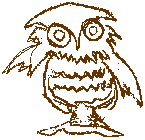
Literacy rates are difficult to establish for any population. Aside from the simple challenge of collecting data, it is difficult to know how to define literacy usefully. Is one literate if one can write only one's name? Or must one be able to write a grocery list? Is a person literate who can read but not write? Can one read if the process of deciphering the written text is so labored that one ends up not knowing what it means? Should a measure of literacy take account of how much people actually do read? After all, there is little practical difference between not being able to do a thing and not bothering to do it.
In considering most premodern populations, all these questions are made yet more difficult because of our lack of knowledge about how many people even tried to learn to read. Through most of human history, of course, there were no writing systems. But the safest bet is that in most societies in which a writing system did come into existence, very few people actually used it, perhaps making use of professional scribes if inscriptions or documents were actually needed for anything. It also seems likely that a difficult writing system, one composed of many symbols or used with little standardization, would have been mastered by even fewer people.
But that may not always be the case. In an unusual study of pre-modern literacy, Evelyn Rawski tried to gather all the evidence available about education and literacy in China during the Qīng Dynasty (1644-1911). Chinese writing had been in use for millennia, but because of the difficulty of mastering it, the usual assumption was that few people actually read or wrote. Rawski, however, found that (1979: 140):
Evidence of the large number of potential teachers and the widespread distribution of private schools led us to conclude that it was possible for a broad cross-section of Ch'ing [= Qīng] males to attain some degree of literacy in private and charitable schools. Information from the mid- and late nineteenth century suggests that 30 to 45 percent of the men and from 2 to 10 percent of the women in China knew how to read and write. This group included the fully literate members of the elite and, on the opposite pole, those knowing only a few hundred characters. Thus loosely defined, there was an average of almost one literate person per family.
Rawski points out that everyone in China lived in a world in which writing mattered, from calligraphic decoration to written charms, from calendars, contacts and genealogies to public announcements and medical prescriptions. She notes that many people no doubt had very imperfect mastery of the complex written system. However, much of the complexity was due to the large number of characters, and if one's needs were modest, a small number of characters might serve surprisingly well. Rawski speaks of those who managed only brief periods of schooling (1979: 145):
… Their curriculum provided mastery of probably only a few hundred characters. Their limited reading skills, and even lower levels of writing ability, must have enabled some to keep simple accounts and to cope with the transactions involved in their daily lives: sales at their standard markets, the rental of lands to till, and the like. Probably many in this group consulted the more educated members of their communities for help in matters that required more advanced skills in reading and writing.
Intriguingly, this suggests that the very inefficiency of Chinese writing from the perspective of someone seeking broad mastery of its thousands of characters could actually be an efficiency for someone content to read and write only a handful of them.
As an aside, the experience of foreigners learning Chinese may well overemphasize the difficulty of learning characters, since for a native speaker they represent spoken entities already known, while the foreigner typically is attempting to master a new spoken expression at the same time as its written form.
Source cited:
- RAWSKI Evelyn Sakakida
- 1979 Education and Popular Literacy in Ch'ing China. Ann Arbor: University of Michigan Press. (LA1131.R35 ISBN: 0-472-08753-3.)
Content Revised: 2025-05-02
Software Last Modified: 2025-02-04
Search term: "chineseliteracy" (Debugging)